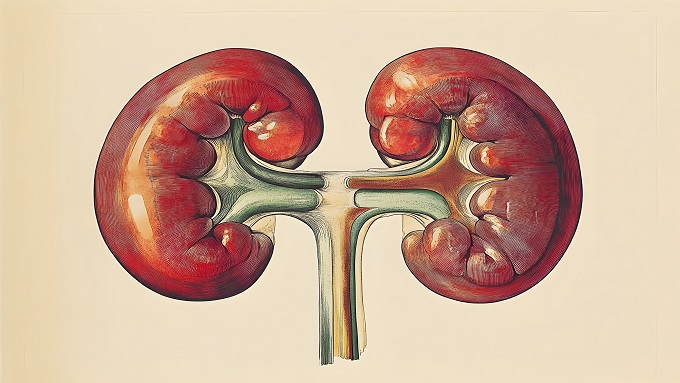BACTERIAL PATTERN AMONG SEPSIS PATIENTS IN INTERNAL MEDICINE INPATIENT WARD DR. SOETOMO GENERAL ACADEMIC HOSPITAL, SURABAYA, INDONESIA

Downloads
Highlights:
1. Bacteria remain a major cause of bacterial sepsis.
2. The most common causal agent in bacterial septicaemia was the gram-positive bacterium.
Abstract:
Background: Bacteria remain the primary cause of bacterial sepsis. Gram-negative bacteria are the most commonly isolated from sepsis patients. However, gram-positive bacterial infections have also increased recently. Objective: To identify the pattern of bacterial infection in sepsis patients in Internal Medicine inpatient ward Dr. Soetomo General Academic Hospital, Surabaya, Indonesia. Material and Method: This retrospective study reviewed the medical records of all sepsis patients in Internal Medicine Ward Dr. Soetomo General Academic Hospital, Surabaya, Indonesia from January 1 – December 31, 2016. All patients were divided according to bacterial species into two groups: patients with gram-positive and gram-negative infection. The collected data were statistically analyzed using SPSS ver. 16.0 to find out the frequency. Result: From 179 eligible data reviewed, there were 103 (57.5%) patients with gram-positive bacterial infection and 76 (43.5%) patients with a gram-negative bacterial infection. The major isolates of gram-positive bacteria were Staphylococcus hominins (30 isolates) and gram-negative bacteria was Escherichia coli (30 isolates), 43 isolates showed multi-drug resistant organisms; Escherichia coli ESBL 23 isolates, Klebsiella pneumoniae ESBL 3 isolates, Klebsiella oxytoca ESBL 2 isolates and Methilcillin Resistance Staphylococcus aureus 5 isolates. Conclusion: The most common causative agent in bacterial sepsis was gram-positive bacteria. The major isolated gram-positive bacteria are Staphylococcus hominis and gram-negative bacteria were Escherichia coli. The species of multi-drug resistant organisms found are Methilcillin-Resistant Staphylococcus aureus (MRSA), Escherichia coli ESBL, Klebsiella pneumonia ESBL and Klebsiella oxytoca ESBL. Among the patients with multi-drug resistant organism infection, Escherichia coli ESBL were the most prevalent one.
Becker, K. Heilmann, C. Peters, G., 2014. Coagulase-negative staphylococci. Clinical Microbilogy Review, 27(4): 870–926. doi: 10.1128/CMR.00109-13.
Capsoni, N. Bellone, P. Aliberti, S. Sotgiu, G. Pavanello, D., 2019. Prevalence, risk factors and outcomes of patients coming from the community with sepsis due to multidrug resistant bacteria. Multidisciplinary Respiratory Medicine. 14(1): 23. doi: 10.1186/s40248-019-0185-4.
Fitri, N. Rusli, M. Wahyunitisari, M., 2015. Antibiotic use is not a risk factor of infection by extended-spectrum. Microbiology Indonesia, 9(4): 150–156. doi: 10.5454/mi.9.4.2.
Hadi, U. Kuntaman, K. Qiptiyah, M. Paraton, H., 2013. Problem of antibiotic use and antimicrobial resistance in Indonesia: Are we really making progress?. Indonesian Journal of Tropical and Infectious Disease, 4(4): 5. doi: 10.20473/ijtid.v4i4.222.
Hassoun, A. Linden, P.K. Friedman, B., 2017. Incidence, prevalence, and management of MRSA bacteremia across patient populations-a review of recent developments in MRSA management and treatment. Critical Care, 21(1): 211. doi: 10.1186/s13054-017-1801-3.
Irawan, D. Hamidah. Purwati. Triyono. Bramantono. Arfianto, V. et al., 2012. Profil penderita sepsis akibat bakteri penghasil ESBL. Journal of Internal Medicine, 13(1).
Martin, G. S., 2012. Sepsis, severe sepsis and septic shock: Changes in incidence, pathogens and outcomes. Expert Review of Anti-infective Therapy. 10(6): 701–706. doi: 10.1586/eri.12.50.
Mayr, F. B. Yende, S. Angus, D.C., 2014. Epidemiology of severe sepsis. Virulance, 5(1): 4–11. doi: 10.4161/viru.27372.
Mendoza-Olazarán, Z. Morfin-Otero, R. Rodriguez-Noriega, E. Llaca-Diaz, J. Flores-Trevino, S. Gonzales-Gonzales, GM., et al. 2013. Microbiological and molecular characterization of staphylococcus hominis isolates from blood. PLoS ONE, 8(4): e61161.
Mora-Rillo, M. Fernandez-Romero, N. Navarro-San, F.C. Diez-Sebastian, J. Romero-Gomez, M.P. Arnalich, F.F. et al., 2015. Impact of virulence genes on sepsis severity and survival in Escherichia coli bacteremia. Virulance, 6(1): 93–100. doi: 10.4161/21505594.2014.991234.
Osaki, S. Kikuchi, K. Moritoki, Y. Motegi, C. Ohyatsu, S. Nariyama, T. et al., 2020. Distinguishing coagulase-negative Staphylococcus bacteremia from contamination using blood-culture positive bottle detection pattern and time to positivity. Journal of Infection and Chemotherapy, 26(7): 672–675. doi: 10.1016/j.jiac.2020.02.004.
Parija, S. C., 2012. Microbiology and immunology. 2nd edn. India: Elsevier.
Phua, J. Koh, Y. Du, B.,Tang, YQ. Divatia, JV. Tan, C.C. et al., 2011. Management of severe sepsis in patients admitted to Asian intensive care units: Prospective cohort study. BMJ, 342: d3245. doi: 10.1136/bmj.d3245.
Pop-Vicas, A. & Opal, S. M., 2014. The clinical impact of multidrug-resistant gram-negative bacilli in the management of septic shock. Virulance, 5(1): 206–12. doi: 10.4161/viru.26210.
Ramachandran, G., 2014. Gram-positive and gram-negative bacterial toxins in sepsis: A brief review. Virulence, 5(1): 213–218. doi: 10.4161/viru.27024.
Sakellariou, C. Gurntke, S. Steinmetz, I. Kohler, C. Pfeifer, Y. Gastmeier, P. et al., 2016. Sepsis caused by extended-spectrum beta-lactamase (ESBL)-positive K. pneumoniae and E. coli: Comparison of severity of sepsis, delay of anti-infective therapy and ESBL genotype. PLOS ONE. Edited by W. C. Yam, 11(7): e0158039. doi: 10.1371/journal.pone.0158039.
Snyder, S.R. Favoretto, A.M. Baetz, R.A. Derzon, J.H. Mass, B.M.M. Shaw, C.S et al., 2012. Effectiveness of practises to reduce culture contamination: A laboratory medicine best practices systematic review and meta-analysis. Clin biochem, 45(0): 999–1011. doi: 10.1016/j.clinbiochem.2012.06.007.
Surbatovic, M. Popovic, N. Vojvodic, J. Milosevic, I. Acimovic, G. Stojicic, M. et al., 2015. Cytokine p rofile in severe gram- positive and gram-negative a bdominal sepsis. Nature Publishing Group, 5: 1–12. doi: 10.1038/srep11355.
Vitanata, M. Bramantono. Hadi, U. Widodo, ADW. Suharto. Wasito, E., 2012. Pola kuman dan panduan terapi empiris sepsis di bangsal penyakit dalam RSUD Dr Soetomo Surabaya. In Sepsis from Basic Science to Clinical Management: 51–55.
Yilmaz, M. Eladi, N. Balkan, II. Arslan, F. Batirel, AA. Bakici, M.Z et al., 2016. Mortality predictors of Staphylococcus aureus bacteremia: A prospective multicenter study. Annals of Clinical Microbilogy and Antimicrobials, 15(1): 7. doi: 10.1186/s12941-016-0122-8.
Copyright (c) 2022 Ilma Dzurriyyatan Toyyibah, Musofa Rusli, Juniastuti Juniastuti

This work is licensed under a Creative Commons Attribution 4.0 International License.
1. The journal allows the author(s) to hold the copyright of the article without restrictions.
2. The journal allows the author(s) to retain publishing rights without restrictions.
3. The legal formal aspect of journal publication accessibility refers to Creative Commons Attribution 4.0 International License (CC-BY).
































